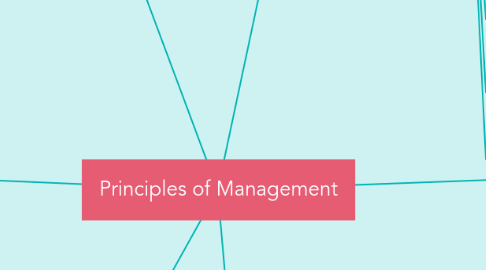
1. Learning Objectives
1.1. 1. Learn who managers are and about the nature of their work
1.2. 2. Understand the importance of leadership, entrepreneurship, and strategy within organizations
1.3. 3. Know the dimensions of management articulated in the planning-organizing-leading-controlling (P-O-L-C) framework
1.4. 4. Understand the relationship between economic, social, and environmental performance
1.5. 5. Understand the concept of performance is used at the individual and group level
2. Performance of Individuals and Groups
2.1. Individual
2.1.1. Two key facts: In role performance and OCB (or extra-role performance)
2.2. Group performance
2.2.1. A function of how well individuals achieve a combination of individual and group goals.
3. Economic, Social, and Environmental Performance
3.1. Organization
3.1.1. Can be viewed along three dimensions-financial, social, and environmental. Referred to as the triple bottom line, where the latter two dimensions are included in the definition of CSR.
4. Vocabulary
4.1. Management: The art and science of accomplishing individual and organizational goals through the efforts of individuals and groups using planning, organizing, leading, and controlling.
4.2. Principles of management: The concepts managers use in an effort to accomplish management goals.
4.3. Empowerment: The process of enabling or authorizing an individual to think, behave, take action, and control work and decision making in autonomous way.
4.4. Leadership: The act of influencing others toward a goal.
4.5. Entrepreneurship: The recognition of opportunities (needs, wants, problems, and challenges) and the use or creation of resources to implement innovative ideas for new, thoughtfully planned ventures.
4.6. Entrepreneur: A person who engages in the process of entrepreneurship.
4.7. Strategy: The central, integrated, externally-oriented concept of how an organization will achieve its objectives.
4.8. Strategic Management: Examines how actions and events involving top executives, firms, and industries influence a firm's success or failure.
4.9. Environmental Scanning: The act of analyzing the critical external contingencies facing an organization in terms of economic conditions, competitors, and customers.
4.10. Strategic Planning: The process of analyzing competitive opportunities and threats, as well as the strengths and weaknesses of the organization, and then determining how to position the organization to compete effectively in its environment
4.11. Tactical planning:Intermediate-range planning that is designed to develop relatively concrete and specific means to implement the strategic plan.
4.12. Operational Planning:Assumes the existence of goals and objectives and specifies ways to achieve them.
4.13. Job Design:The process of putting together various elements to form a job, bearing in mind organizational and individual worker requirements.
4.14. Job enrichment:A job redesign technique that allows workers more control over how they perform their own tasks.
4.15. Teamwork:Cooperative effort by the members of a group or team to achieve a common goal.
5. Who are Managers?
5.1. Types of Managers
5.1.1. Top managers: responsible for developing the organizations strategy and acting as a steward for its vision and mission.
5.1.2. Functional managers: are responsible for efficiency and effectiveness of a specific area such as accounting or marketing.
5.1.3. Supervisory managers: are responsible for coordinating a subgroup with a particular function or a team composed of members from different parts of the organization.
5.1.4. Line managers: lead a team that contributes directly to the products or services the organization creates.
5.1.5. Staff Manager: leads a group that creates indirect inputs, provide an advisory role.
5.1.6. Project manager: responsible for the planning, execution, and completion of projects.
5.1.7. General Manager: responsible for managing a clearly identifiable, revenue-producing unit, such as a store, business unit, or product line.
5.2. The principles of management include four critical functions: planning, organizing, leading, and controlling. This P-O-L-C framework provides useful guidance for common marginal roles.
6. Leadership, Entrepreneurship, and strategy
6.1. Leadership
6.1.1. Helps usunderstand who leads the organization forward and what the critical characteristics of good leadership might be.
6.2. Entrepreneurship
6.2.1. Fanatical about identifying opportunities and solving problems for any organization
6.2.2. Answers big questions about "what" an organizations purpose might be
6.3. Strategic management
6.3.1. Aims to make sure that the right choices are made
6.3.2. makes sure that a good strategy is in place to exploit big opportunities

